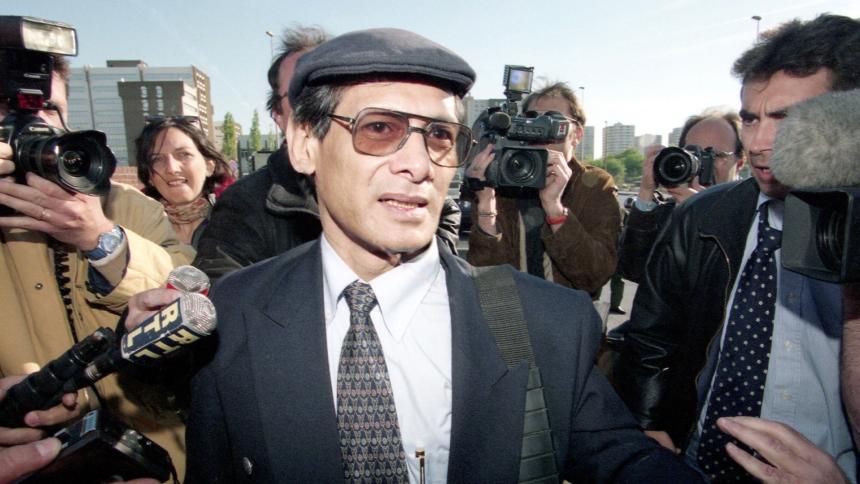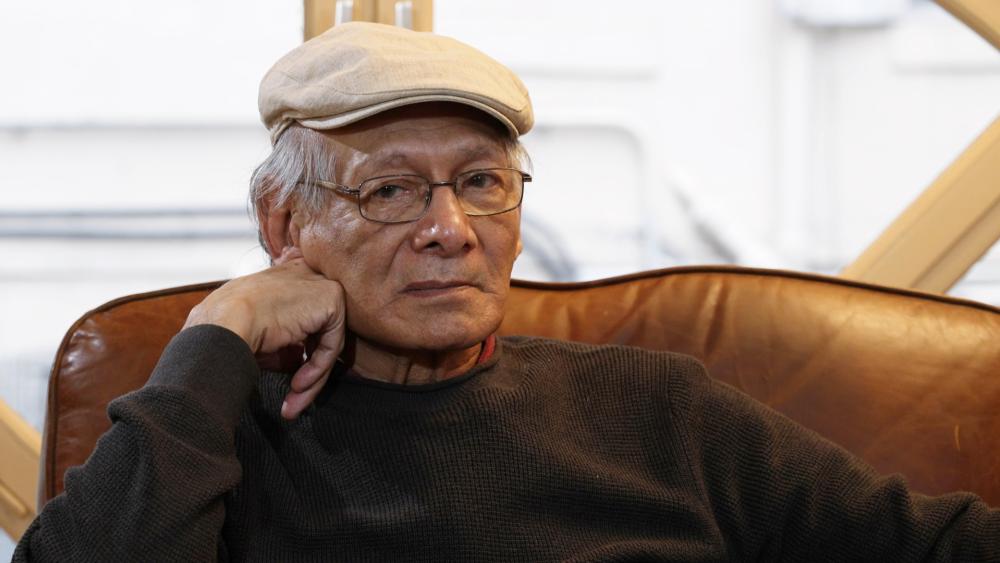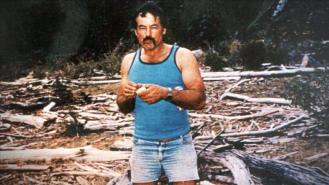
'The Serpent': The murders of Charles Sobhraj
The Serpent: Conversations With A Killer is a two-part series that delivers an unprecedented portrait of Charles Sobhraj, one of Asia's most notorious criminals. Told through a series of unpublished conversations discretely recorded from the culprit's jail cell and testimonies of those who know him best, it's a documentary that showcases the serial killer like never before.
The Serpent: Conversations With A Killer is available to watch on demand for Sky and Virgin customers, as well as to stream on Crime+Investigation.
During the mid-1970s, a serial killer known as ‘The Serpent’ preyed on travellers along the infamous Hippie Trail, a winding route spanning Turkey, Iran, Afghanistan, Pakistan, India, Nepal, and Thailand. Charles Sobhraj, as he was later identified, gained a reputation for his cunning ability to evade capture.
Even before the string of murders began in Thailand in 1975, Sobhraj had a lengthy criminal record, having been incarcerated in Paris for burglary. After his release, he delved into a life of luxury with the help of wealthy prison volunteer Felix d’Escogne. To sustain this facade, Sobhraj resorted to writing bad cheques and committing burglaries.
His life took an even more dark turn when he crossed paths with Chantal Compagnon, whom he married in 1970. Together, they embarked on a journey from Paris to Asia, preying on young tourists. Their modus operandi involved stealing the tourists' belongings and passports in order to assume their identities and travel undetected. However, a botched armed robbery at Hotel Ashoka forced Sobhraj to flee to Iran while Compagnon returned to Paris.
Sobhraj eventually made his way to Thailand, and in October 1975, the body of Teresa Knowlton was discovered dead in a plastic bag on Pattaya Beach. Teresa, en route to Kathmandu, had encountered Sobhraj and his then-accomplice, Ajay Chowdhury, in Bangkok. Soon after, Sobhraj crossed paths with French-Canadian traveller Marie-Andree Leclerc; they posed as gem dealers to rob unsuspecting tourists.
Over the next few weeks, more dead tourists began popping up along the Gulf of Thailand. When local newspapers began reporting on the murders, Sobhraj and Leclerc left for Nepal, where they continued targeting tourists. After the bodies of North American backpackers Connie Jo Bronzich and Laurent Carriere were discovered in Kathmandu, detectives learned that Connie had been seen with Sobhraj, who she believed was a gem dealer.
Upon learning that he had been connected to the double murder, Sobhraj and Leclerc fled for India. They remained here for just a couple of weeks before returning to Thailand. By 1976, detectives in Thailand had begun piecing together the jigsaw of the murdered tourists.
Herman Knippenberg was a junior diplomat in the Netherlands Embassy in Thailand and he had been tasked with looking into the murders of Henricus Bintanja and Cornelia Hemker, Dutch backpackers whose burned bodies were found just outside Bangkok.

While working on the case, Knippenberg learned about a man named Alain Gautier, who possessed several passports, including two Dutch ones. This lucrative information came from a neighbour of Sobhraj, although he had used the alias of Alan Gautier when introducing himself. It was an interesting lead, but as the investigation was gaining momentum, Sobhraj and Leclerc left for India, where they killed an Israeli man named Alan Aaron Jacobs.
After some time, they returned to Thailand. When they left the country for a few short weeks, Knippenberg knew he needed to act fast and ordered a raid of their apartment. Here, he came across a large cache of foreign passports and documents, but still couldn’t uncover Sobhraj’s true identity. Knippenberg handed over the evidence to Thai police, but they hesitated to act, fearing negative consequences on tourism if a serial killer was involved.
However, Knippenberg was persistent and approached various embassies in Bangkok. His efforts paid off when Leclerc's family in Canada contacted him and revealed the true identity of Alan Gautier. Despite mounting evidence against Sobhraj as a serial killer, Thai police remained hesitant, prompting Knippenberg to turn to the media. Newspapers in the country published reports on Sobhraj, including his photograph, and his numerous victims across Thailand.
Eventually, the evidence became too overwhelming to ignore, leading Thai police to issue an Interpol notice, resulting in a worldwide arrest warrant for Sobhraj. As news of his murders spread in Bangkok, he fled to France with Leclerc before heading to India. It was in Delhi, on 5th July 1976, that he committed his most audacious crime.
Sobhraj befriended a group of French students visiting the Taj Mahal and schemed to steal all of their passports. While back at the Vikram Hotel, Sobhraj convinced them to take laxatives mixed with sleeping pills, claiming it was a preventive measure against contaminated water. However, Sobhraj mistakenly miscalculated the doses, causing the students to fall ill instead of unconscious. They managed to overpower Sobhraj and detained him until the police arrived.
The following year, Sobhraj and Leclerc were found guilty of committing a range of crimes, which included passport forgery, theft, drugging, and the culpable homicide of Luke Solomon, a French tourist in Benares who succumbed to a drug overdose. As a consequence, Sobhraj received a 12-year prison sentence. In 1979, a book titled The Life and Crimes of Charles Sobhraj, authored by Richard Neville and Julie Clarke, was published, shedding light on Sobhraj's murders along the Hippie Trail.
Then, on 16th March 1986, Sobhraj managed to escape from Tihar Jail by drugging the prison guards. It's worth noting that the motive behind the escape wasn't necessarily to break free from custody, but rather to avoid extradition to Thailand, where he was slated to face trial for the 1975 murders. He was arrested two weeks later, and upon his return to custody, Leclerc died of cancer.
The escape had significant consequences for Sobhraj, leading to an additional 10 years being added to his sentence. Eventually, he was released from prison in 1997. However, by that time, the 20-year arrest warrant issued by the Thai police had expired, meaning he couldn't be charged with the string of murders from 1975. Sobhraj then returned to Paris, and in 2003, he travelled to Nepal. He was recognised in the streets of Kathmandu and arrested and charged with the murders of Connie Jo Bronzich and Laurent Carriere.
In 2004, Sobhraj was convicted of Connie's murder and handed a life sentence. In 2014, he was also found guilty of Laurent's murder, leading to another life sentence being imposed. In total, Charles Sobhraj is confirmed to have killed 12 unsuspecting victims, although it’s speculated that he may have killed up to 30.
Despite his proficiency, he was released from prison on 23rd December 2022 and subsequently deported to France.







